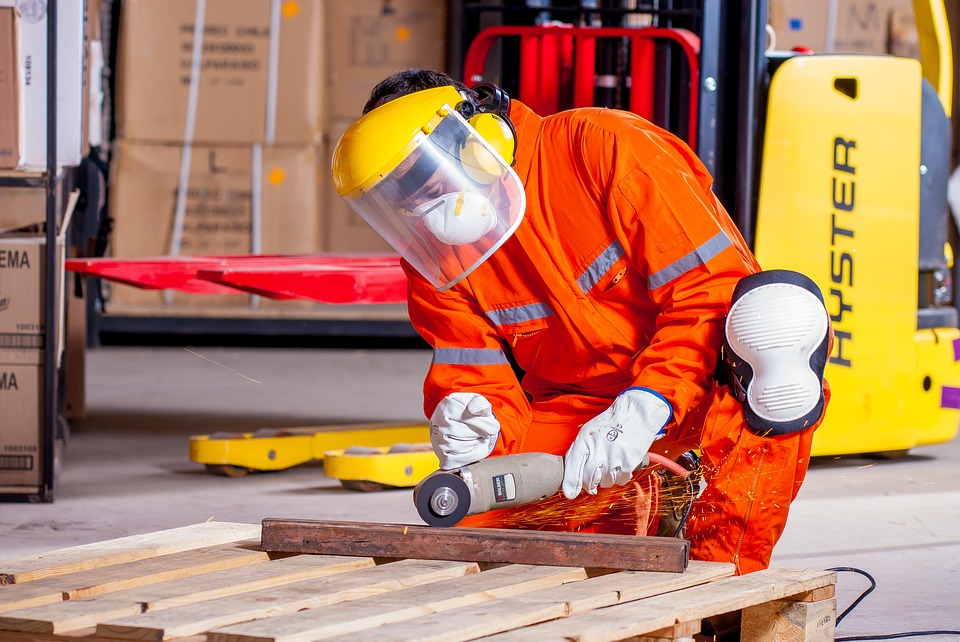
Workplace safety is a critical aspect of running a business. It is the organization's responsibility to ensure that their workers’ environment is safe and comfortable. Part of promoting workplace safety is the prevention of work-related injuries or incidents.
Having a safe and healthy workplace provides a lot of benefits. Creating a safe work environment aids employees to gain more focus and engagement in their tasks leading to an increased level of productivity.
Common Safety Issues in the Workplace
Knowing common safety issues is essential in determining how a company can make its workplace ideal in promoting productivity and efficiency. Listed below are the workplace issues that require proper attention:
#1 Slips, Trips, and Falls
According to the Canadian Centre for Occupational Health and Safety (CCOHS), over 42,000 workers get injured annually due to fall incidents. Statistics show that most (67%) of falls result from slips and trips, while the remaining (30%) fall from a height.
Slips happen when there is only a little friction between the footwear and the floor. Common reasons as to why slips happen are:
- occasional spills
- wet or oily surfaces
- loose rugs or mats
On the other hand, trips occur when your foot hits an object, resulting in losing balance, and may even fall. Common causes of trips are the following:
- blocked view
- wrinkled carpeting
- uncovered tables
- poor lighting
- uneven walking surfaces
- clutter in your way
#2 Violence and Harassment in the Workplace
Violence and harassment in the workplace are acts in which a person is abused, intimidated, assaulted, or threatened in the work-environment. Examples of workplace violence and harassment are:
- Physical attacks - these refer to actions like hitting, pushing, shoving, or kicking.
- Verbal abuse - insults, swearing or using condescending language.
- Verbal or Written Threats - any expression to inflict harm towards others.
- Threatening behaviour - destroying property or throwing objects.
#3 Ergonomic Hazards
This type of hazard happens to workers who often strain their bodies while doing their jobs, giving certain backaches, stiff necks, and other possible pains in the body. This hazard can be because of sitting for too long, poor posture, awkward movements that may be repetitive, frequent lifting, improperly adjusted workstations, and using the wrong tools and equipment.
#4 Fire
Another common workplace safety issue is fire. Fires can start from unchecked wires, overloading electric charge in devices, and improper handling of certain workplace materials.
Tips on How to Improve Workplace Safety
Workplace safety is ensured by following company procedures and implementing upgrades. These should be consistent and efficient. Knowing what to do to prevent accidents and safety issues is essential to provide a conducive work environment. The following are tips on how to improve workplace safety.
#1 Inspect Your Workplace
To ensure safety in the workplace, regularly checking equipment and tools is necessary to ensure that they are well-maintained and are safe to use. Checking the office storage areas should also be done as well as reviewing safe work procedures to avoid workplace hazards. It is also necessary to take a Risk Assessment. According to CCOHS. Risk Assessment is the overall hazard identification process, risk analysis, and risk evaluation. Doing a Risk Assessment can help identify the workplace's possible hazards and how to prevent or control them.
It is essential to know what to consider in doing a workplace risk assessment. WHO guidelines state that "For every risk assessment, consider the environment, the task, the threat, resources available (personal protective equipment), and the feasibility of protective measures.". It should also extend to the workers in the form of assessing the employees' place.
#2 Promote Management Commitment
Management commitment is about improving proper relationships among employees by promoting healthy communication. It is developed by the management and employee representatives, with the health and safety committee, and the union. The following are the objectives and policies of management commitment, according to CCOHS:
- Applied to the management, employees, clients, independent contractors, and anyone who has a relationship with the company.
- Define what you mean by workplace violence, harassment, bullying, and concrete language.
- Provide clear examples of unacceptable behaviour and working conditions
- State the organization's view toward workplace violence and harassment, with its commitment to prevention.
- Clearly state the consequences of making threats or committing violent acts.
- Outline the process where preventive measures are developing.
- Encourage to report all incidents, even reports from witnesses.
#3 Using Ergonomic Furniture in the Office
These types of furniture help your employees and their well-being in the workplace. Ergonomic furniture aims to support good posture by providing innovative comfort and design. Other benefits of using an ergonomic chair include:
Can Reduce Pain
Employees who work on their seats for extended periods are at risk of experiencing pain in the back, back, and shoulders. Ergonomic furniture and equipment can be a big help. Ergonomic chairs have lumbar support, headrest, backrest, and an armrest that help reduce body aches commonly associated with sitting.
In addition, standing desks help prevent strain and pressure from the spine caused by prolonged sitting hours.
Can Boost Productivity
When employees are free from pain and discomfort, they are likely to be more productive and efficient at work.
Can Help Improve Employees’ Wellness
Wellness involves not only the physical health of your employees but also their mental health. When you invest in your employees’ wellness and health by having ergonomic office furniture, you create a message that you care about them. In return, employees become happier and more motivated to do their tasks.
An independent market research company called GFK collaborates with Monster.ca to know Canadian employee satisfaction rates in their jobs. They found out that nearly two-thirds (64%) of Canadians love or like their job a lot, and only 7% don't like their current role. The reason for high job satisfaction and engagement is associated with better employee mental health and well-being.
#4 Keep Things Clean and Organized
Having a clean and organized environment lessens the chances of workplace accidents such as slips, trips, and falls. How do you prevent some of these accidents from happening?
Here are some tips on how to make your workplace organized and tidy:
Promote Proper Housekeeping
Like any home that needs proper cleaning, good housekeeping in the workplace is also essential to prevent accidents. CCOHS has created a list for good housekeeping. It includes:
- Cleaning all spills immediately
- Marking spills and wet areas
- Mopping or sweeping debris from floors
- Removing obstacles from walkways
- Keeping walkways clear from clutter
- Adjusting mats, rugs, and carpets that do not lay flat.
- Always closing file cabinets or storage drawers.
- Covering cables that cross walkways
- Keeping working areas and walkways well lit.
- Replacing used light bulbs and faulty switches
Enhancing walking surfaces in your workplace is a crucial step in avoiding slips and trips. Replacing or recoating floors, installing mats, and other abrasive-surface enhancers can improve workplace safety and decrease the risk of falling.
To prevent accidents, especially in workplaces where floors may be oily or wet, employees must wear proper footwear. The appropriate footwear increases comfort and prevents slips, trips, and falls, thus, improving employees' safety.
A messy workplace is prone to accidents. That is why it is crucial to ensure that files, boxes, and other equipment types are stacked and organized safely. With an organized and clutter-free work environment, employees will surely be more creative, productive, and motivated in doing their jobs.
#5 Train Employees in Safety Measures and Safety Protocols
Workplace safety starts with employees who know how to obey safety requirements on their jobs. It is crucial that proper training is given for all workers, especially if there is a potential risk for injury associated with the job. You can also provide written instructions on safe work procedures. Written instructions are beneficial to the employees as they serve as a reference guide on workplace safety procedures whenever they are unsure of what they are doing.
Proper training, written guidelines, and consistent updates will ensure that employees’ safety will not be put at risk. This guideline will also help prevent other possible consequences during workplace accidents that may lead to even more significant problems.
Conclusion:
Workplace safety is not only about the work environment; it is also about the workers who would spend most of their time working. Improving workplace safety is essential to the ever-changing demands of the economy. It is only right to increase safety measures in the workplace to lower the risk of experiencing safety problems.
A healthy and safe workplace does not only protect workers from illness and injury. It also increases the productivity and quality of the employees’ work, making them accomplish company goals.





